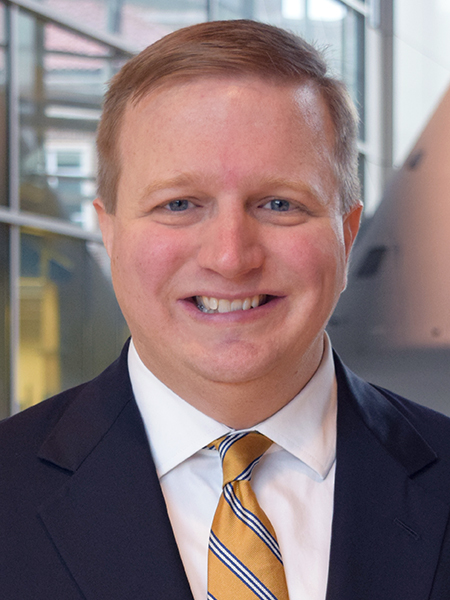Jewell selected to receive Office of Naval Research's Young Investigator Program award
Joseph Jewell was selected to receive a highly competitive early-career award program from the Office of Naval Research.

Jewell, an assistant professor, is one of 38 recipients who will share $20 million in funding from ONR’s Young Investigator Program to conduct innovative scientific research that will benefit the U.S. Navy and Marine Corps, a release said. The final candidates were chosen from more than 260 applicants. Academic achievement and potential for significant scientific breakthrough are key elements of the evaluation criteria, the release said.
Jewell was granted a three-year, $600,000 award for “Detailed Investigation of Hypersonic Instability, Breakdown, and Natural Transition under Quiet Flow with Simulated Ablation-Gas Injection.”
The program is for college and university faculty who have obtained a Ph.D. within the past seven years and who “show exceptional promise for doing creative research,” the ONR YIP website said.
“The Young Investigator awards are extremely competitive and assess not just the proposed project but also the investigator, so this is much more than just another grant to me,” said Jewell, who joined the AAE faculty in August 2019. “I'm really looking forward to working with ONR not just on this grant but also to craft a research program that meets the Navy’s needs and can address questions of Naval relevance in hypersonics for years to come.”
When vehicles travel at hypersonic speeds through the atmosphere — at least five times the speed of sound — they undergo a process called “ablation” where, at high temperatures and high speeds, material vaporizes and erodes from the surface of the vehicle. The erosion happens as a complicated interaction between the surface and the aerodynamics. Understanding how that process happens is important: When a vehicle runs out of material to ablate away, it fails.
One of the key things that happens during ablation is outgassing of gaseous species.
Through the ONR YIP, Jewell will simulate that ablative outgassing by injecting carbon monoxide from the surface of his team’s wind tunnel model into the boundary layer. The research will specifically study the interaction of the injection and the boundary layer.
Purdue’s Boeing/AFOSR Mach-6 Quiet Tunnel is uniquely well-suited for the research, as it is the largest operational tunnel in the world able to produce low-disturbance flow.
“In other words,” Jewell said, “by running the experiment in the BAM6QT, we know that any boundary layer disturbances or effects that we see are due to our simulated ablation, not contamination from tunnel noise.”
The research could provide a relevant and highly useful approach to visualize hypersonic flow fields, as well as a promising measurement for high-enthalpy or ablative flows that naturally produce carbon monoxide among other carbon products.
Jewell will collaborate with other Purdue researchers. Terrence Meyer, a professor in mechanical engineering with a courtesy appointment in AAE, and ME research associate professor Mikhail Slipchenko will assist on the research that includes a pulse-burst laser, and AAE Professors Sally Bane and Carson Slabaugh are offering use of some their equipment, especially high-speed cameras, Jewell said.
“There is a significant amount of equipment, expertise and support here at Purdue that is going to enable us to deliver much more to the Navy than would otherwise be possible,” Jewell said.
The ONR YIP work will fund one graduate student directly, Jewell said, but he is planning to assign a second as well as a Purdue Research Military Initiative student.
Before joining AAE, Jewell spent five years as a research scientist at the Air Force Research Laboratory on Wright-Patterson Air Force Base. But he says it’s “exciting” to open up this research path as well.
“My Grandpa Jewell was a Chief Petty Officer in the U.S. Navy for many years, serving overseas in WWII and stateside during Korea, and I have him and his modern successors who are currently putting their lives on the line for our nation at sea in mind as I begin this project,” Jewell said.
